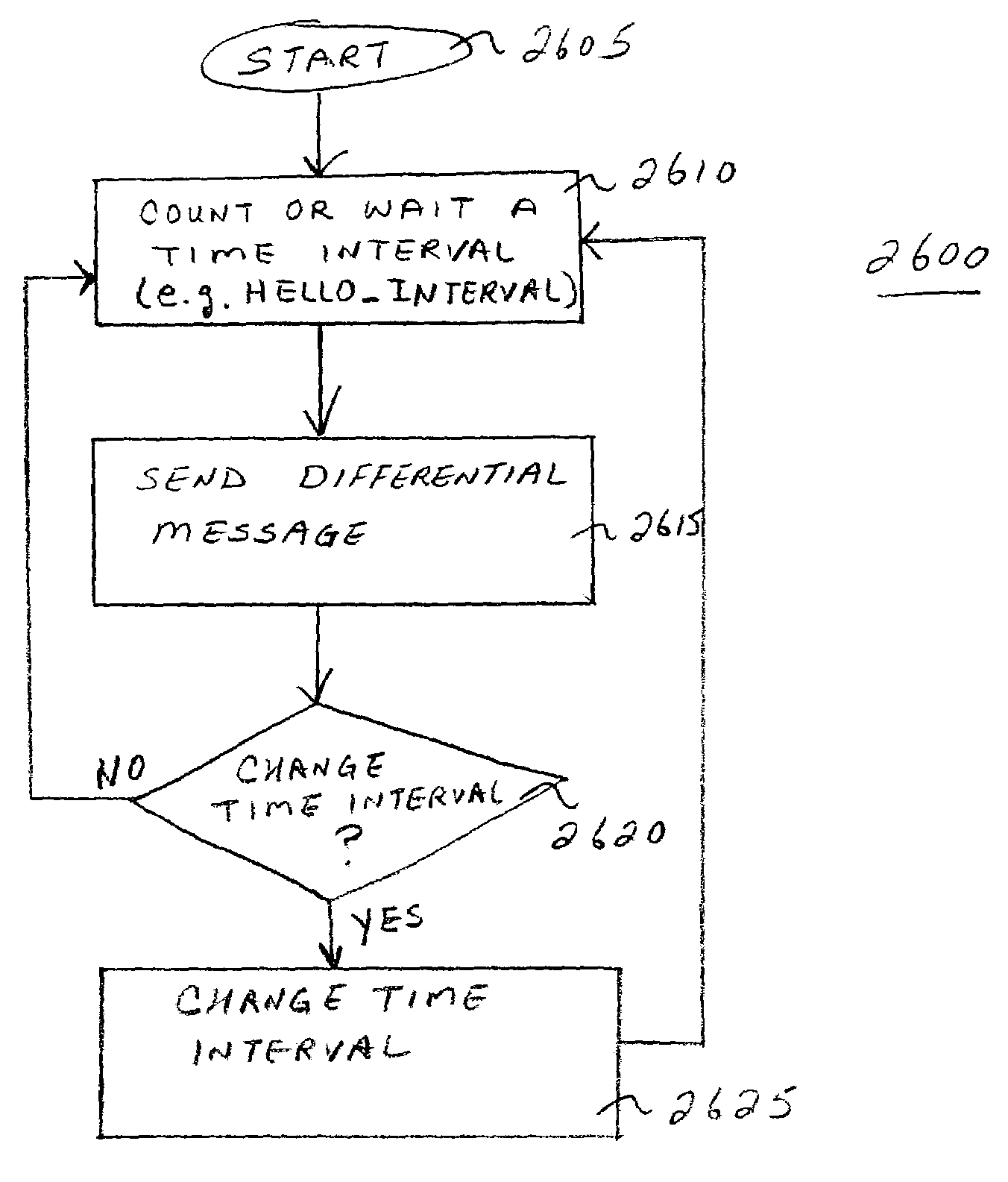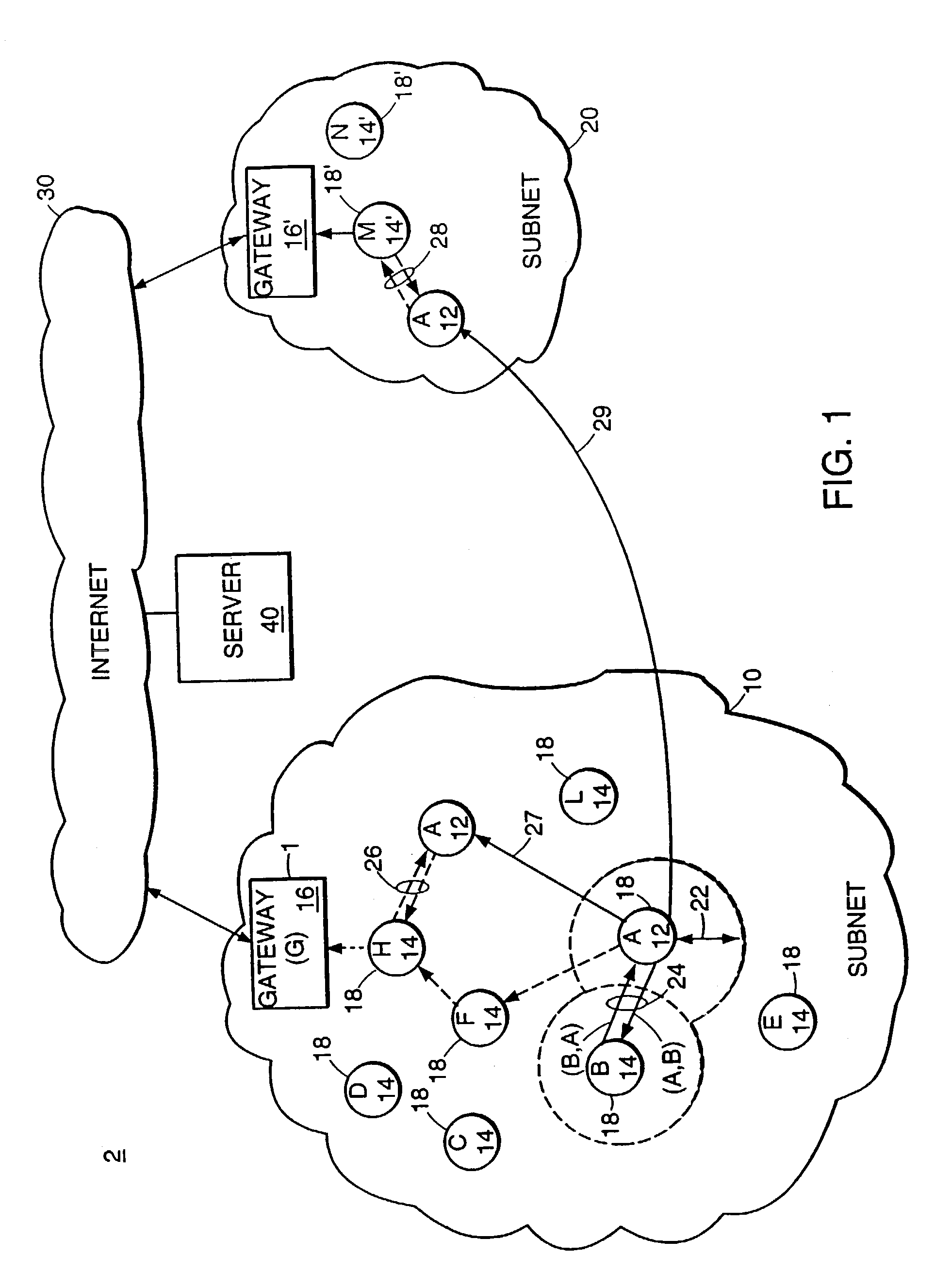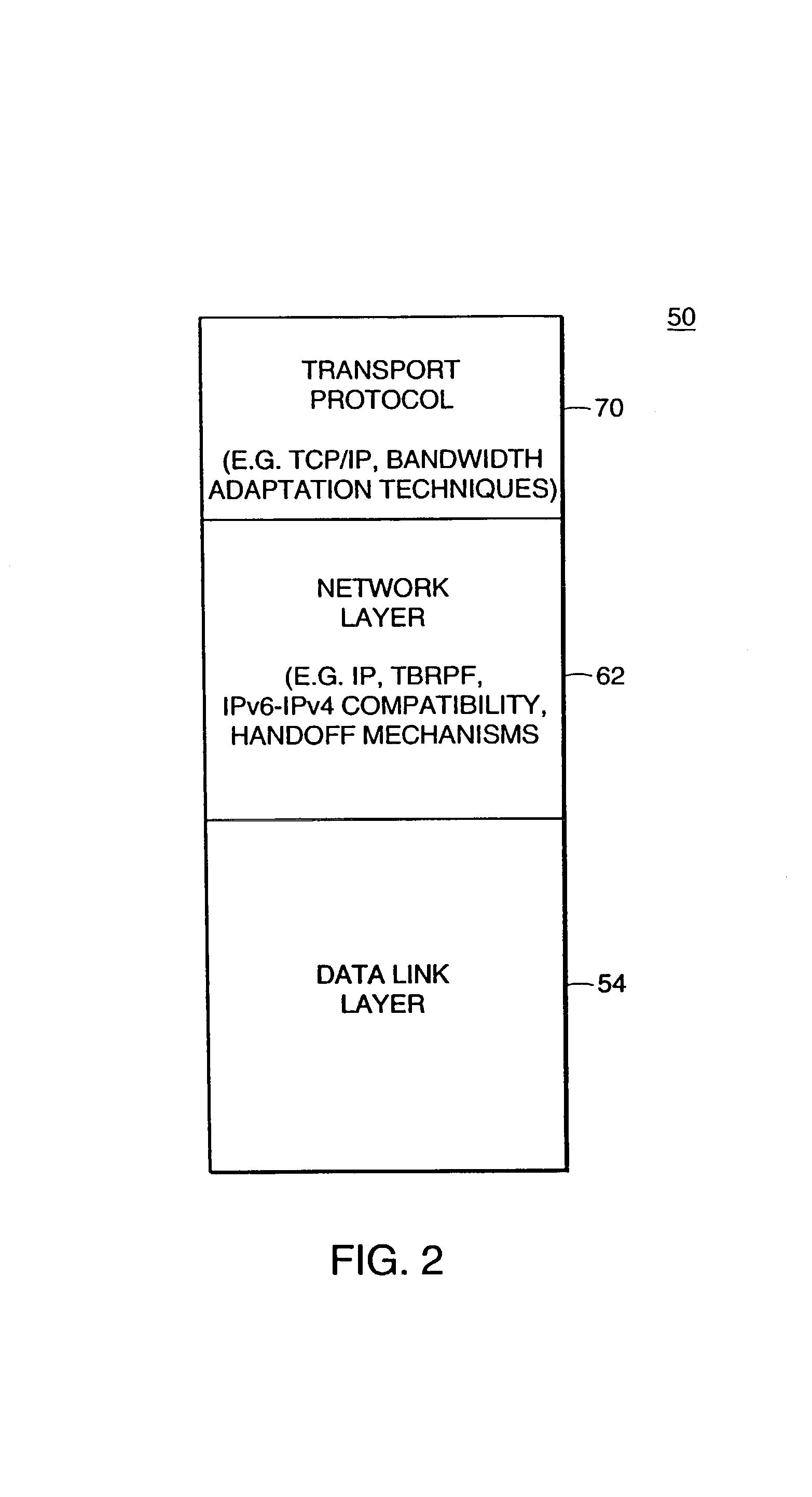Method and apparatus for disseminating topology information and for discovering new neighboring nodes
a topology information and discovery method technology, applied in the field of topology information dissemination methods and apparatuses, can solve the problems of inefficient flood method implementation, inconvenient routing of update information and data packets, and consuming too much network bandwidth, so as to improve robustness and minimize overhead
- Summary
- Abstract
- Description
- Claims
- Application Information
AI Technical Summary
Benefits of technology
Problems solved by technology
Method used
Image
Examples
embodiment
A Partial-Topology Embodiment
[0148]In one partial-topology embodiment, each routing node 14 decides which of its outgoing links (i, j), called “special links,” should be disseminated to all nodes in the subnet 10. This subset of links is maintained in a list L_i. All other outgoing links are sent only one hop (i.e., to all neighbor nodes of node i). Node i sends an update to its neighbor nodes if that update is the addition or removal of a link from the list L_i, or reflects a change in the state of a link in the list L_i.
[0149]Various rules can be used to define the set of special links in the list L_i. For example, one rule defines a link (i, j) to be in L_i only if node j is the parent of node i for some source node other than node j, or if node j belongs to the set children_i(src) for some source node src other than node i. This definition of special links includes enough links to provide minimum-hop paths between any pair of nodes. As a result, this partial-topology embodiment ...
PUM
 Login to View More
Login to View More Abstract
Description
Claims
Application Information
 Login to View More
Login to View More - R&D
- Intellectual Property
- Life Sciences
- Materials
- Tech Scout
- Unparalleled Data Quality
- Higher Quality Content
- 60% Fewer Hallucinations
Browse by: Latest US Patents, China's latest patents, Technical Efficacy Thesaurus, Application Domain, Technology Topic, Popular Technical Reports.
© 2025 PatSnap. All rights reserved.Legal|Privacy policy|Modern Slavery Act Transparency Statement|Sitemap|About US| Contact US: help@patsnap.com



